Baltic Outlook journalist Olga Dolina explores Tenerife and discovers its extraordinary beauty and diversity.
Here, one can combine beautiful volcanic landscapes, staggering sunsets, and cloud forests with wintertime sunbathing, ocean-view restaurants, and rich cultural life – much of it in a single day.
First impression
Until the very moment I stepped outside the airport and into the windy parking lot surrounded by swaying palm trees, I had no idea how Tenerife would reveal itself to me.
My mind was occupied with a perfect image of all-inclusive hotels, surfers, golf courses, and theme parks for families.
But by the end of my trip, I realised that Tenerife had led me to unexpected and sincere discoveries.
This island of never-ending spring, soaked with multicultural influences, remained true to its untamed original character. Tenerife truly has it all.
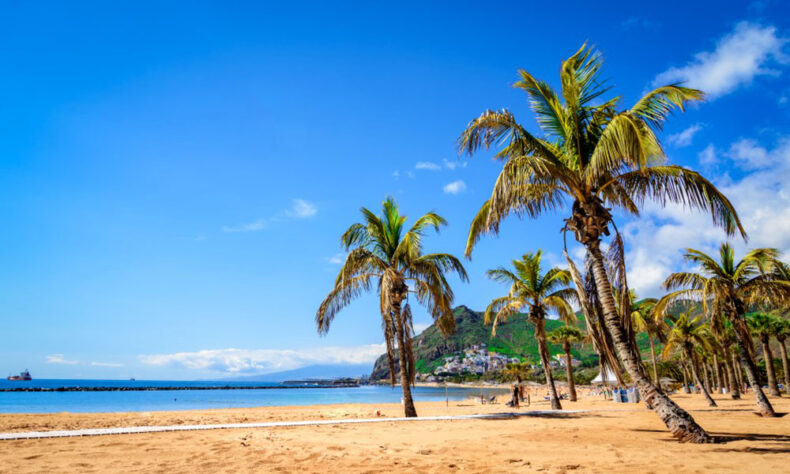
Stunning nature
Beginning in the 1960s, the rough, stony, and sandy volcanic landscape of southern Tenerife began to be filled with all-inclusive resorts.
But a lazy sun-ocean-sangria weekend is not what I’m looking for this time, so I rent a car and head up the southwestern coast to the majestic 500-metre cliffs of Los Gigantes and further along the northwestern coast.
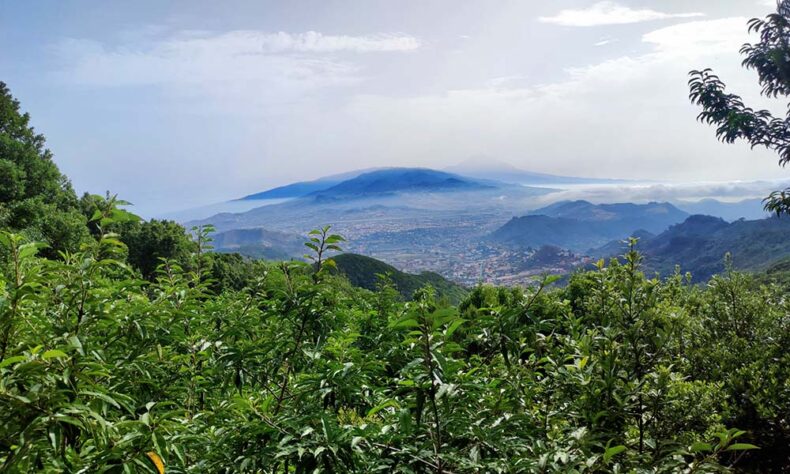
Meanwhile, Tenerife’s best-known natural feature remains on my right, in the middle of the island. At 3718 metres, the Teide volcano is Spain’s highest point.
It and the surrounding national park are a must-visit, whether by cable car or on foot, and at any time of day or night, when the sky is powdered with stars.
There’s hardly anything as powerful in terms of reconnecting with nature as greeting the sunrise or sunset on Mount Teide.
Near the Corona Forestal nature park is also a beautiful hiking path that leads through a so-called lunar landscape – massive rock and sand formations creating bizarre, fairytale-like scenery.
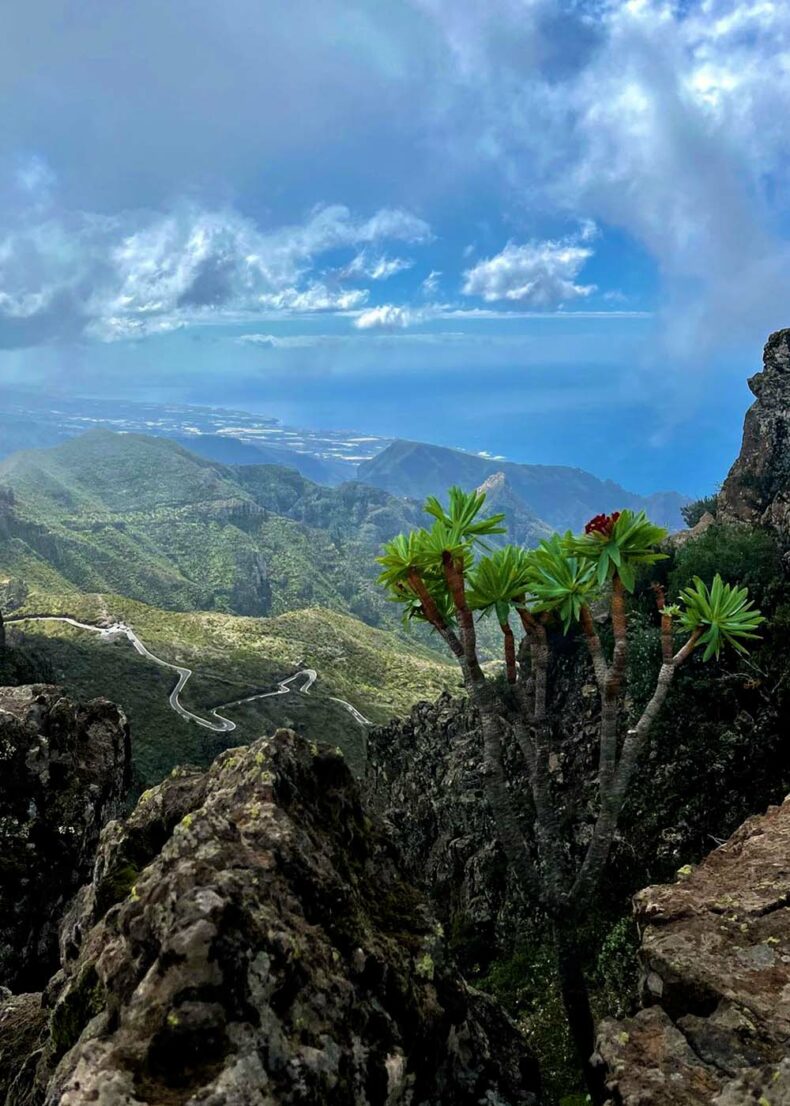
Photo on Instagram
But my route leads through the Teno Rural Park 1300 metres above sea level, which features steep cliffs, forests, valleys filled with impressive cacti, and ocean views – all within a 30-minute drive.
With their black volcanic sands and enclosed shell-like form, the small beaches here appeal to me much more than the ones in the main resorts.
For example, the San Marcos beach near Icod de los Vinos. With its unspoiled local charm, this town is famous for its massive 800-year-old Dragon Tree.
This symbol of Tenerife was worshipped by the ancient Guanches and also widely used in medicine.
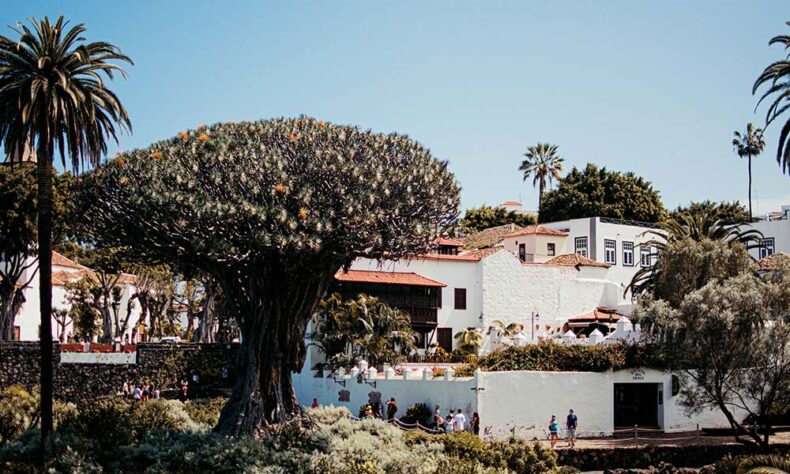
Photo on Unsplash
As I approach the northern part of Tenerife, the landscape changes right in front of my eyes. In contrast with the pastel-hued sandy south, the north is lush and green.
It’s also a couple degrees colder and the weather can play various tricks during the day, which is why vacationers tend to choose the more stable climate in the southern part of the island.
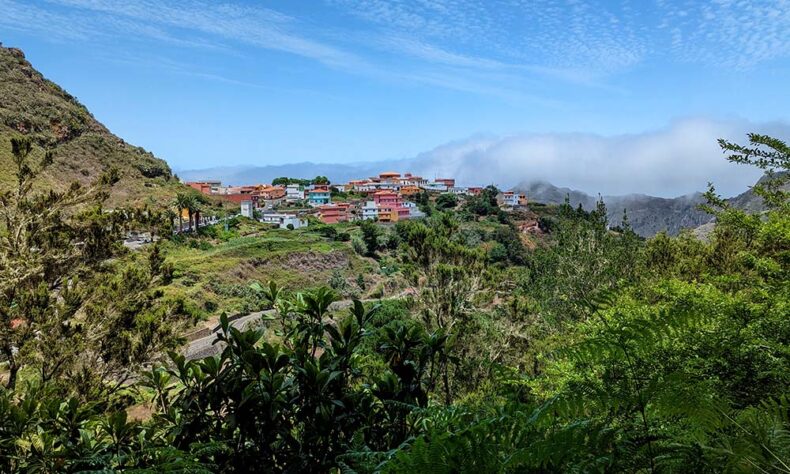
Photo on Unsplash
The highlight of my road trip is the Anaga peninsula in Tenerife’s far northeastern corner.
With its zigzag mountain roads, trails, laurel forests, and heather trees, rugged Anaga is a paradise for hikers.
As I get out of the car, I take a deep breath of the sweetest oxygen I’ve ever had in my life. The air is energised and fresh – even my t-shirt suddenly feels cool and damp.
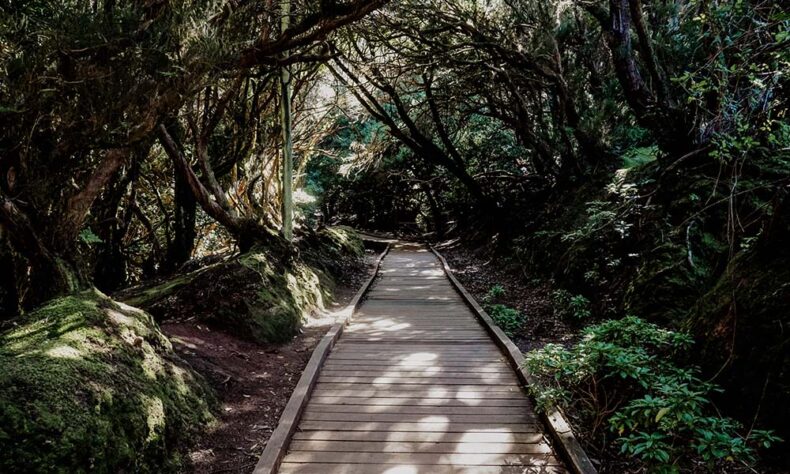
Photo on Unsplash
I go for a walk as well, losing myself between the tunnels of trees and mist-shrouded hills. In this green paradise, there are several observation platforms with uninterrupted views towards the south and El Teide.
Then, charged by the energy of unspoiled nature, I continue my journey to Tenerife’s capital to discover the contemporary side of this island.
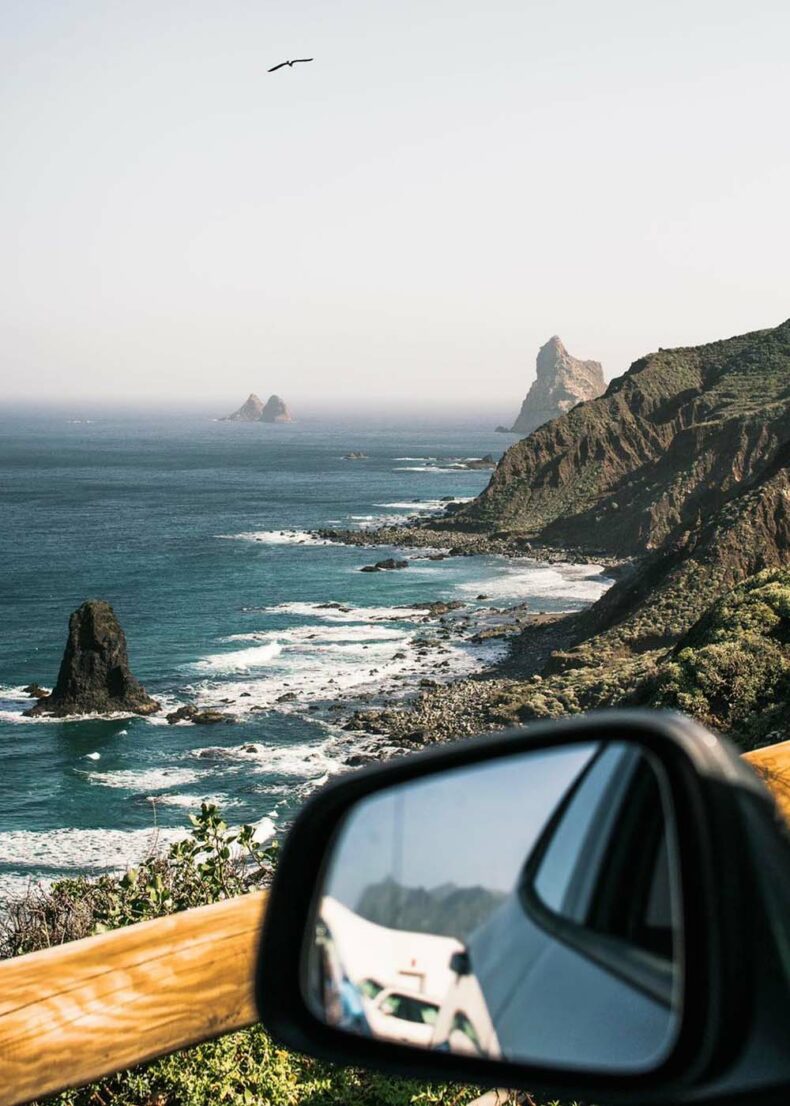
Photo on Instagram
Charming city life
On weekends, the streets of the capital, Santa Cruz de Tenerife, are silent. The locals are likely enjoying themselves on the Playa de Las Teresitas in the village of San Andrés.
With its rocky and wild coastline, the northern part of the island has only a few safe and family-friendly beaches.
Created in the 1970s from 270,000 tonnes of white sand imported from the Sahara Desert, the 80-metre-wide Las Teresitas is considered the best in these parts.
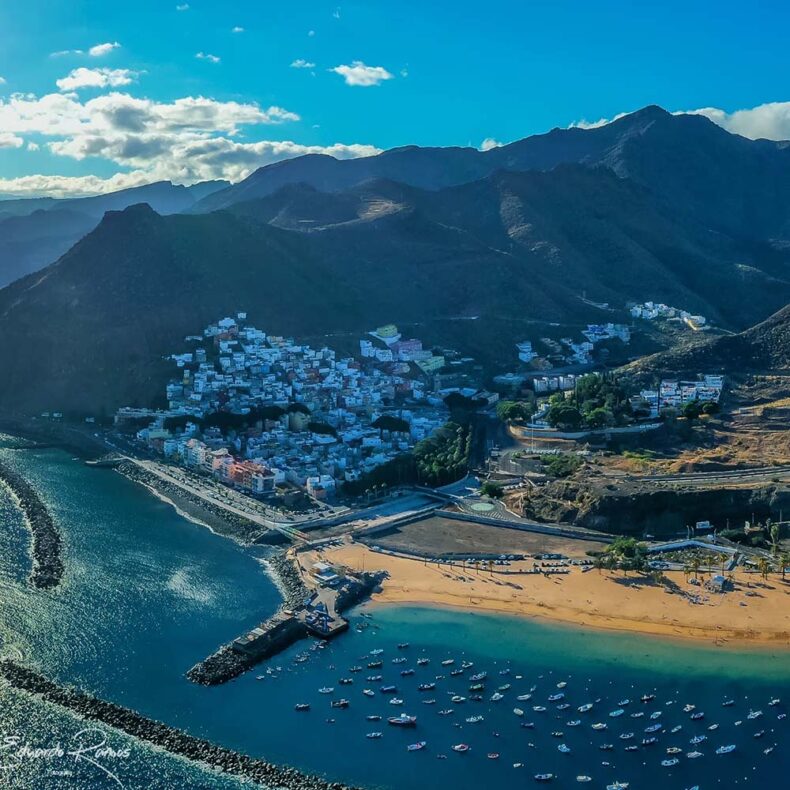
Photo on Instagram
Santa Cruz offers an inspiring switch from nature and relaxation to art and culture.
With a distinctive blend of history and modernity, it impresses with the most emblematic building in the Canary Islands, the Auditorio de Tenerife.

Photo on Instagram
This concert hall designed by visionary Spanish architect Santiago Calatrava opened in 2003.
The blindingly white expressionist structure resembles a wave, a huge sailboat, or a bird’s wing, depending on which angle you look at it from.
It hosts regular symphonic concerts and operas as well as film festival screenings.
The rocks that fortify the shore under the auditorium are painted with portraits of famous musicians from Mozart and Brahms to Mick Jagger.
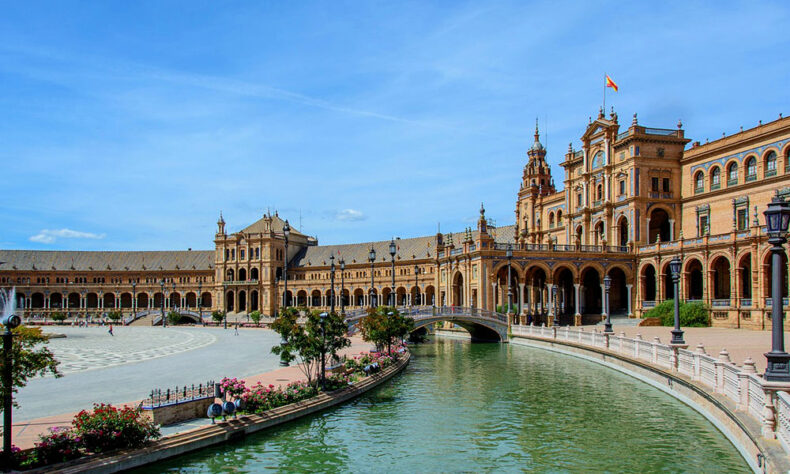
Photo on Pixabay
Santa Cruz has other memorable urban structures as well, such as the Plaza de España.
In 2008, the square gained a massive lake of turquoise water with a fountain designed by famed Swiss architects Herzog & de Meuron.
Obviously, this is a favourite selfie spot and a magnet for children.
The architect duo was also in charge of the concrete-and-glass TEA, also known as the Tenerife Arts Space. It has a library and several spacious exposition halls, but for me it serves first of all as a shelter from the late afternoon heat.
Here visitors will find the dynamic, bizarre paintings of the perhaps less famous but no less talented Spanish surrealist Óscar Domínguez.
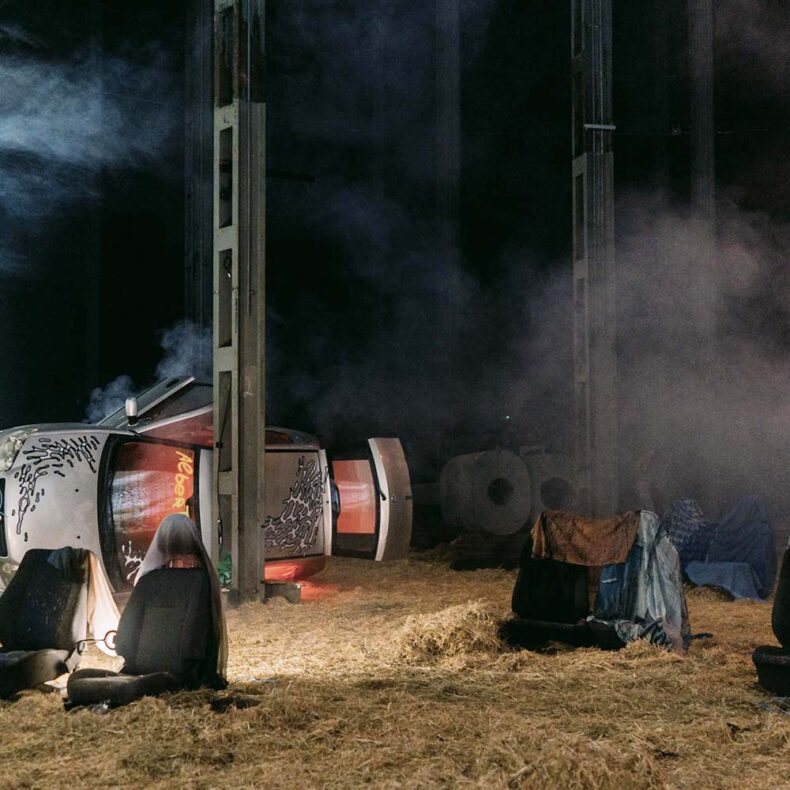
Photo on Instagram
The great thing is that most of the museums here are open until late evening.
The Museum of Fine Arts has a fine repository of works from the Prado Museum featuring notable Spanish and Canarian masters.
Art and photography in the capital is actively represented in the century-old Circulo de Bellas Artes and the spacious La Recova Art Centre located in a former marketplace.
The Museo Municipal de Bellas Artes displays landscape paintings by local artist Valentín Sanz and impressionist pieces by Juan Rodríguez Botas.
The Espacio Cultural El Tanque is an unusual venue that reflects an industrial image – it’s a multimedia art and music space that occupies a former refinery storage tank.
The aromas and flavours of Tenerife
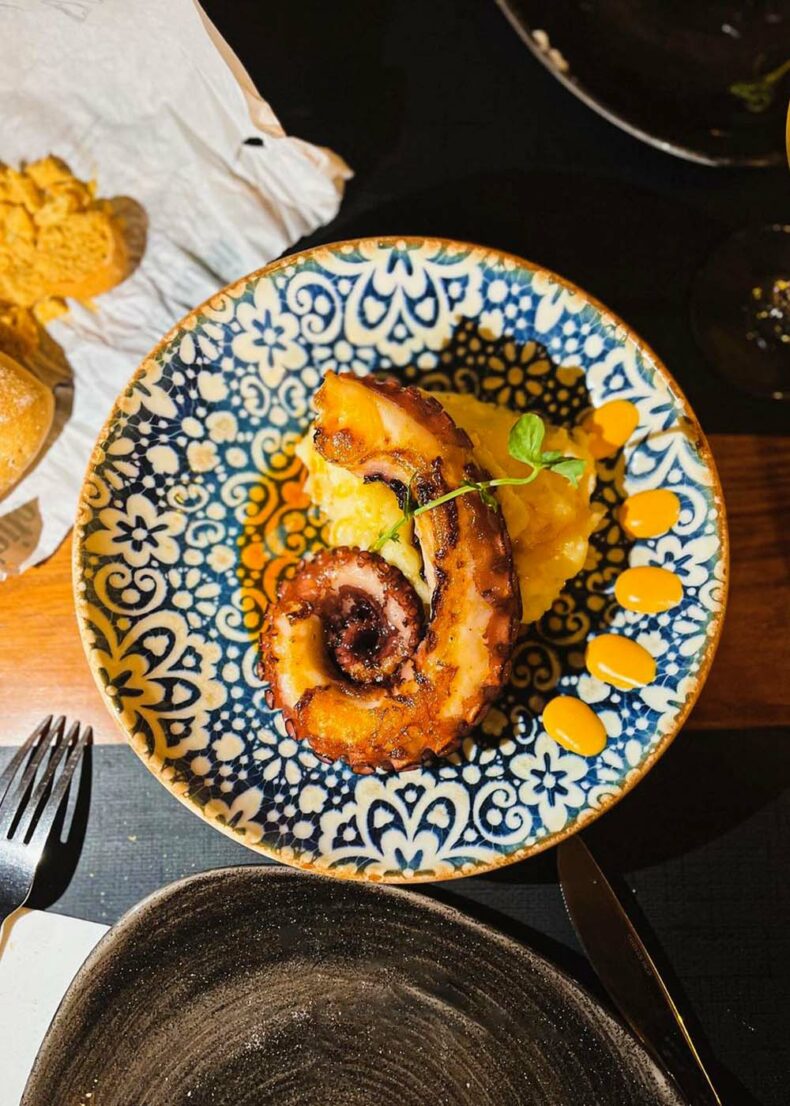
Photo on Instagram
The food scene on Tenerife differs from that of the rest of Spain.
Of course, you can find the traditional combo of tapas, paella, and sangria, but frankly, better leave that for the mainland. Because Tenerife is surrounded by rich Atlantic waters, you can’t go wrong with fish.
Restaurants offer a rich selection of grilled or stewed fish dishes and fried seafood, such as chopitos (tiny squids).
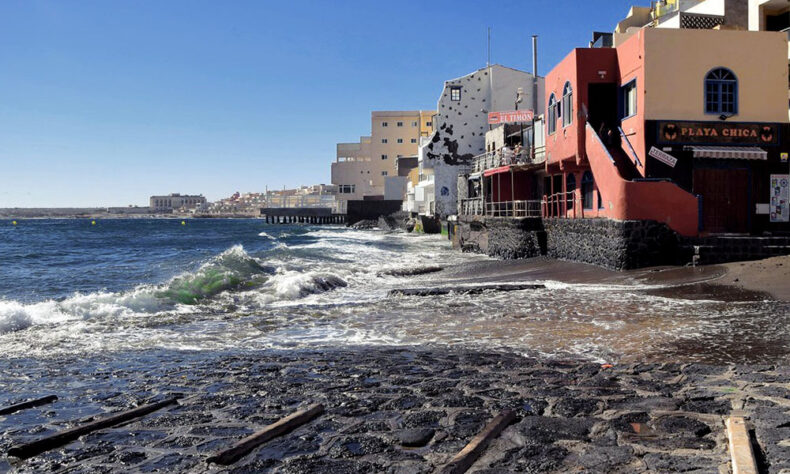
Photo on Elmedano Tenerife
Even though tourism is now the main business in the south of Tenerife, the original, secluded fishing-village vibe is still present here.
In Médano, the aroma of freshly cooked fish with herbs and garlic wafts through the tiny streets from noon until late evening.
The charmingly shabby red building of the Playa Chica restaurant has a terrace with tiny tables and uninterrupted ocean views.
The savoury seafood soup and mixed grilled catch of the day is always delicious.
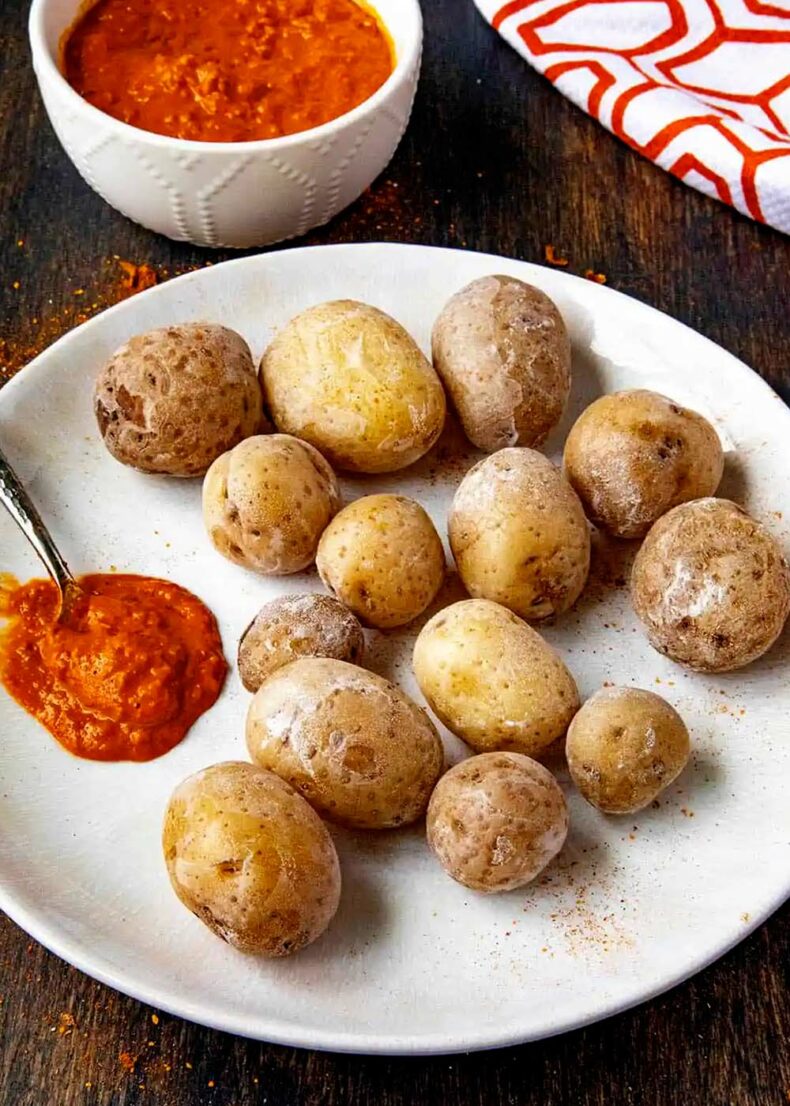
Photo on Chili pepper madness
The local specialties here reflect the lively, fulfilling, down-to-earth character of the island. The most popular vegetable here is papas arrugadas, or small wrinkled potatoes.
The original way to prepare them is to soak them in ocean water for 12 hours and then boil them. Nowadays, however, they’re usually just cooked in water containing ocean salt.
Potatoes, tomatoes, and bananas are some of the most common ingredients on the island, with the perfect climatic conditions allowing up to four harvests per year.
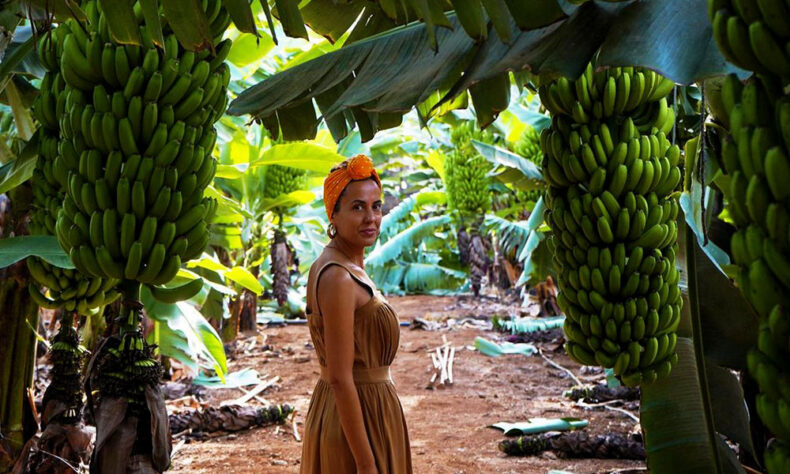
Photo on Instagram
Also characteristic of the island are the patches of vineyards scattered all across the valleys and hard-to-reach slopes.
In 1496, the Canary Islands were colonised by settlers from Spain, Portugal, and other Mediterranean regions. They were mainly farmers, who brought with them various kinds of grapes.
Those vines eventually adapted to the volcanic soil and countless microclimates, so that today more than 30 types of grapes in five appellations grow in the relatively small and rough territory of the islands, some of which cannot be found anywhere else in the world.
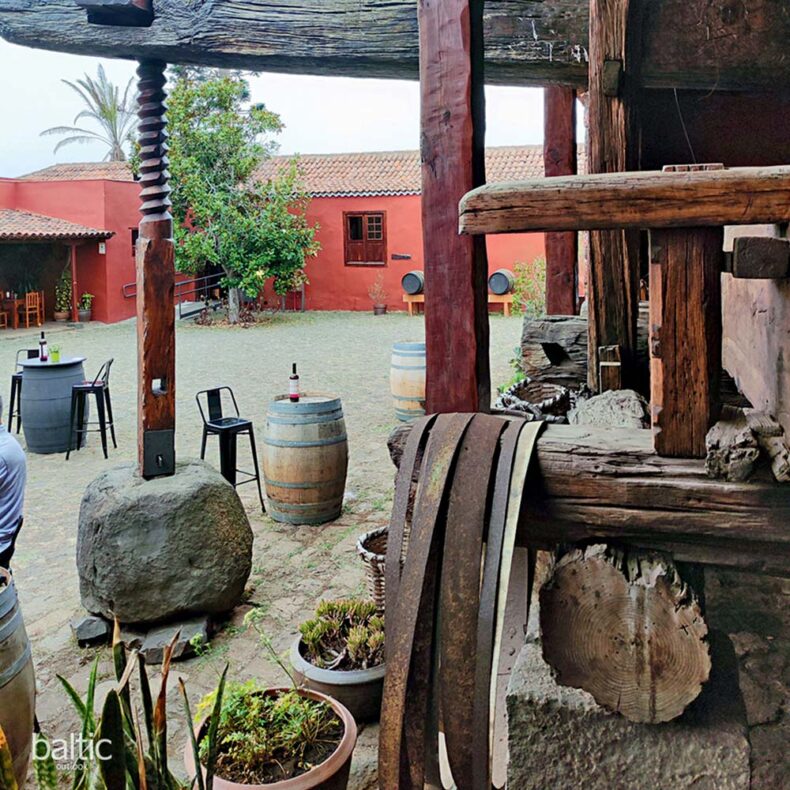
Listán Negro, for instance, is the most popular variety here. For over 300 years, wine was a very important export product and the trade was mostly in the hands of the British.
The best-known and most expensive Canarian wine in those days was the sweet Malvasia favoured by Shakespeare.
I try aromatic dry and sweet Muscatel, which is rich and soft, as well as Listán Blanco, a subtle and vivid, fruity white wine.
However, my favourite is a pure, young Listán Negro from the Orotava valley with an inky purple colour – it’s spicy and powerful yet light, mineraly, and easygoing.
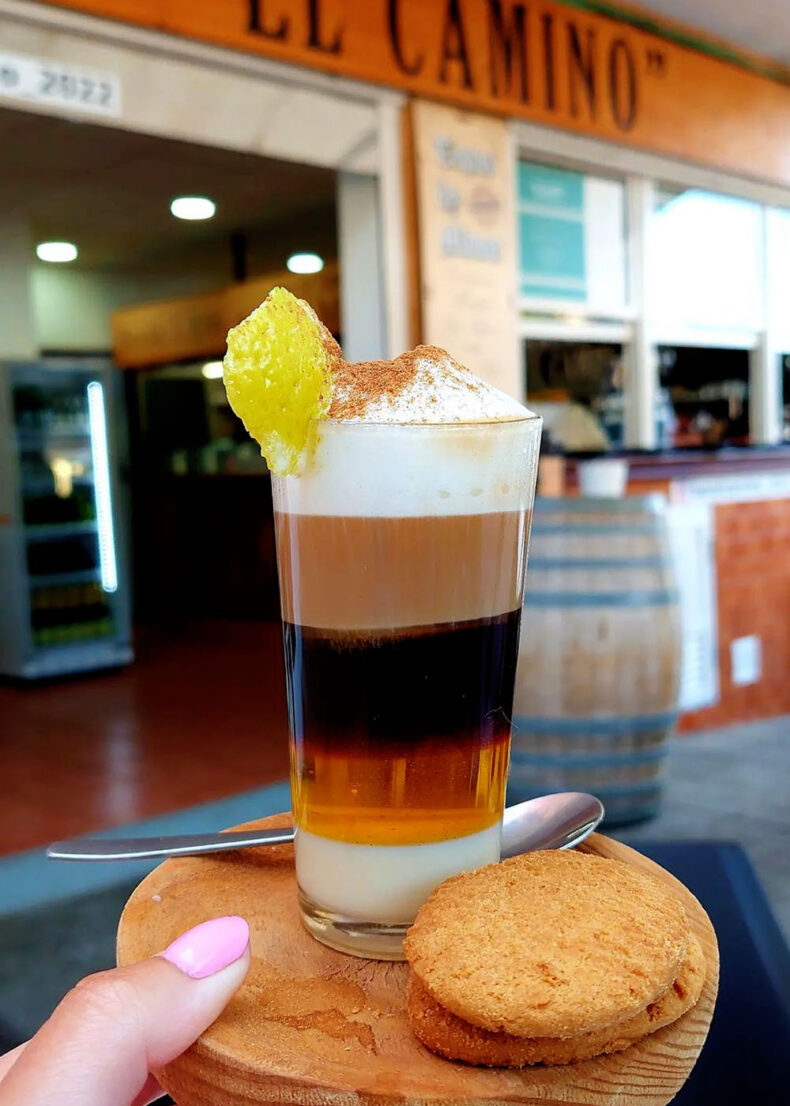
Photo on Instagram
For an energy booster, try a barraquito, or layered coffee drink.
I would even dare to compare Tenerife with this drink. This island has it all: lazy sun-kissed beaches similar to the layer of condensed milk at the bottom of the glass, landscapes with strong character like the contrasting flavour of the bitter liquor in the middle, and then a layer of coffee symbolising the energising power of the ocean.
The vigorous flavour of lemon peel on top of the barraquito makes it special – just like the local islanders, who are always ready to share their Tenerife stories with visitors.
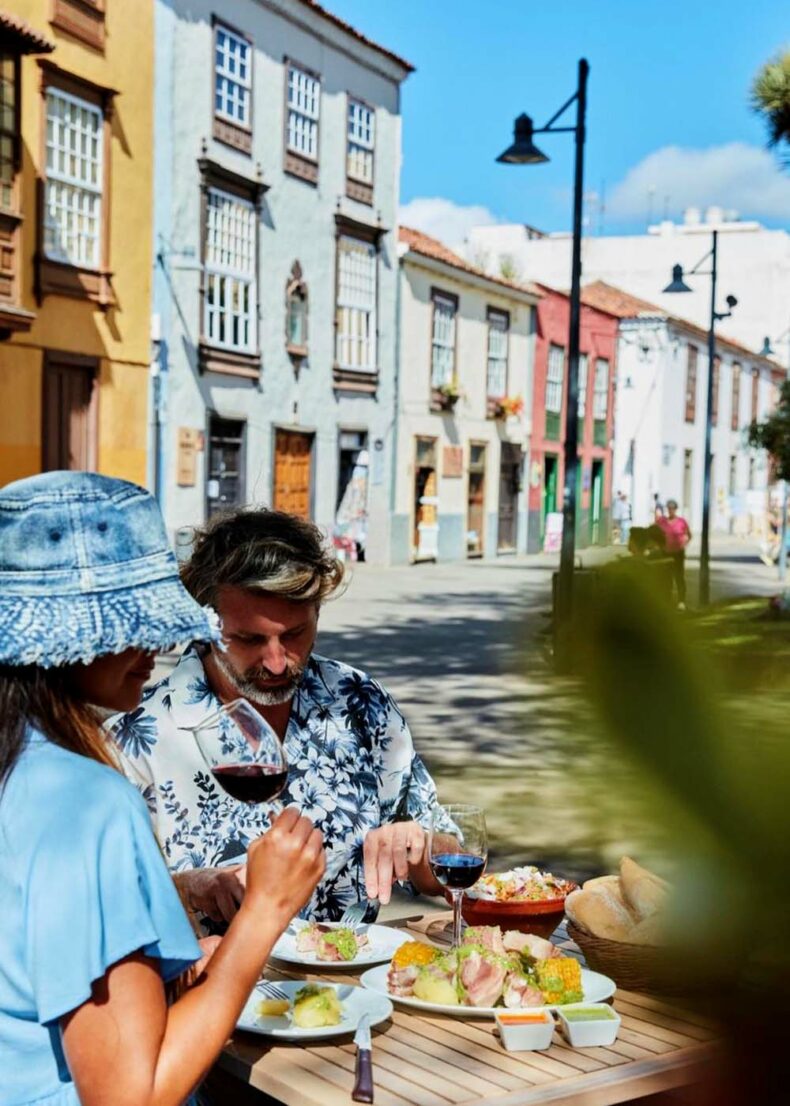
Photo on Instagram
Read more about Tenerife in Baltic Outlook.